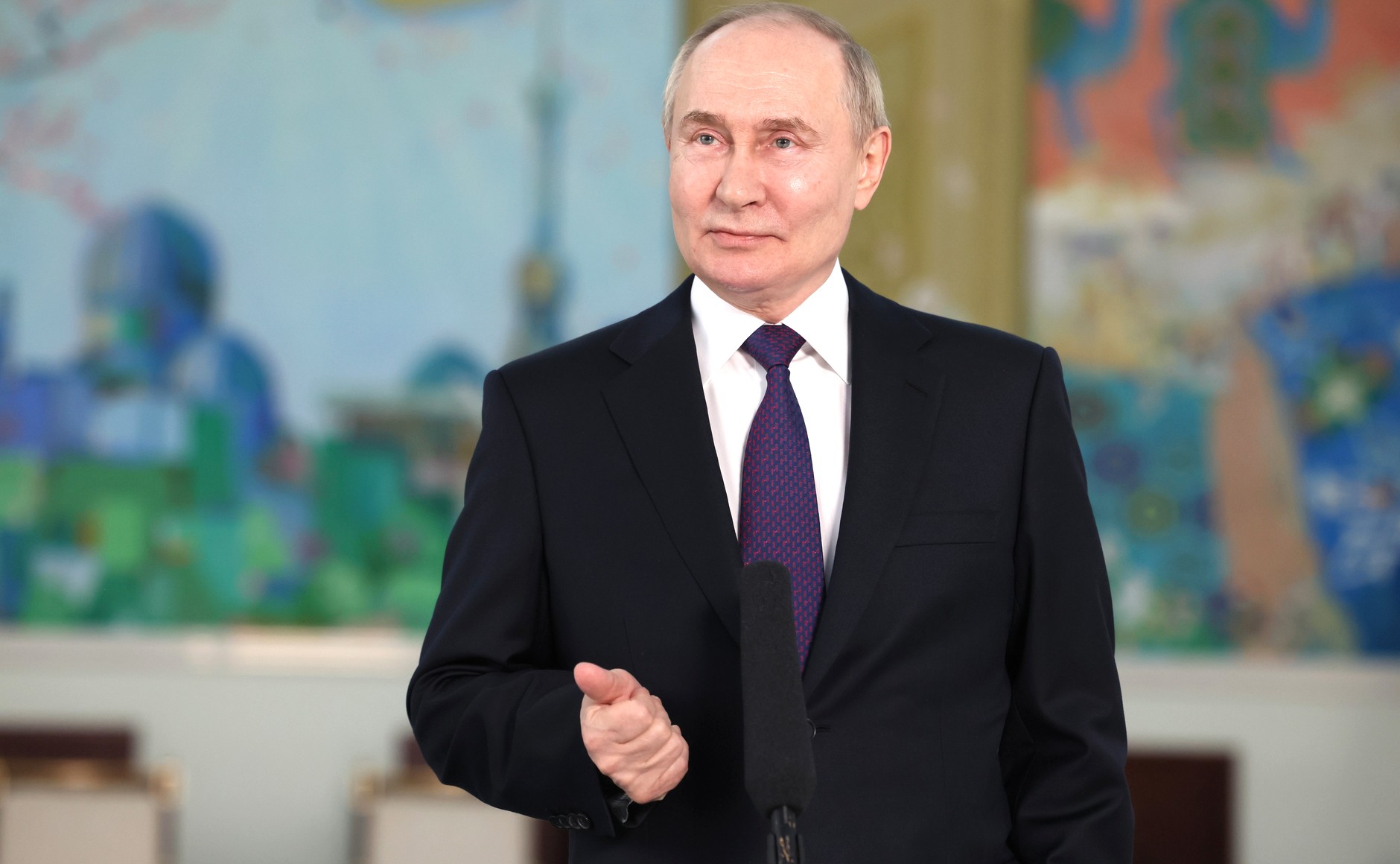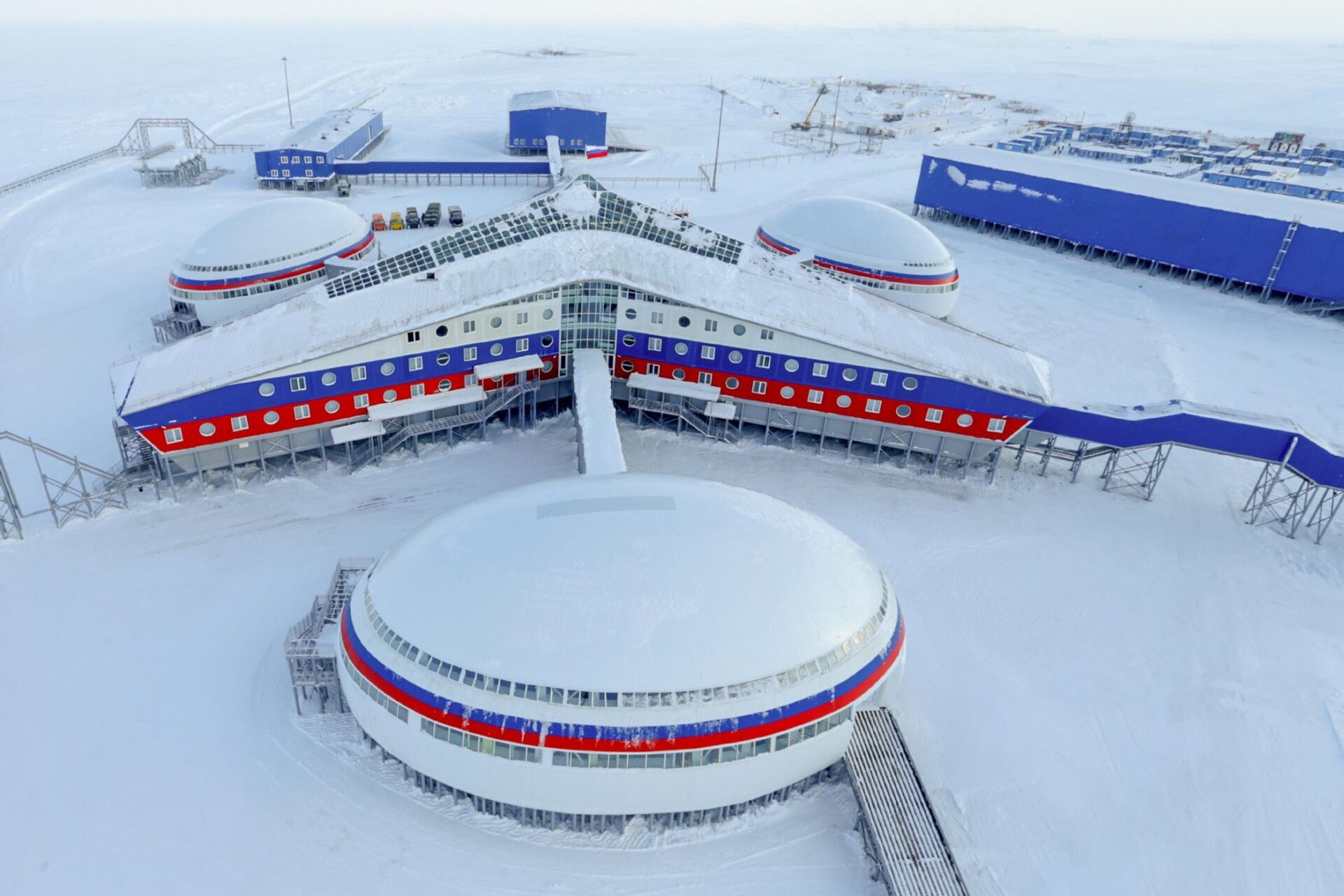
The Kremlin Spells Out Terms of Ukraine’s Surrender (Part Two)
The Kremlin Spells Out Terms of Ukraine’s Surrender (Part Two)
Executive Summary:
- Russian President Vladimir Putin is actively trying to involve Ukraine in bilateral political talks without clarifying the purpose of such discussions to present Kyiv with terms of surrender that involve de facto acceptance of Russia’s territorial gains.
- Moscow also aims to portray Kyiv as uninterested in “peace” and unreasonably intransigent for refusing the proposed talks, hoping to induce confusion among Western governments and the public.
- The Kremlin threatens to establish demilitarized “sanitary zones” on the Ukrainian side of the contact line, as well as a Russian-occupied, Russian-administered zone in Ukraine’s Kharkiv province.
Moscow has recently expressed interest in holding talks with Kyiv without clarifying whether such talks would end with a formal “peace” settlement, an informal “ending (pausing) of the war,” a formal armistice, or an informal suspension of hostilities. The only certainty is that Moscow would use such talks to impose terms amounting to Ukraine’s surrender or, failing that, continue offensive military operations and blame this on unreasonable Ukrainian intransigence.
Russia does not need to offer a ceasefire to incentivize Ukraine to enter into talks. On the contrary, Moscow is intensifying its offensive military operations to force Kyiv into talks. But Moscow could very well offer an armistice, were Kyiv to accept the Kremlin’s settlement terms. These include demilitarizing Ukraine and turning it into an unprotected neutral state, as discussed in March–May 2022 (a framework agreement was initiated in Istanbul on March 29 that year—see EDM, March 30, 31, April 4, 5, 2022 for Jamestown coverage). Additionally, Russia seeks Ukrainian acceptance—possibly without official recognition—of Russia’s territorial gains achieved (see EDM, May 29).
On May 17, 24, and 28, Russian President Vladimir Putin made three extensive statements proposing to reactivate the talks that broke down in the spring of 2022. Putin blamed Kyiv for repudiating the “Istanbul agreements” (Putin’s shorthand for that whole process, in which Istanbul was but a fleeting moment). Putin is factually correct, recalling that Kyiv cast aside those documents and backed out of the negotiations, however, the Kremlin invokes that fact only to blame Kyiv for the breakdown in negotiations.
Putin made the following points in his three extensive, though nearly identical, statements (Kremlin.ru, May 17, 24, 28):
- Kyiv should bow to Russia’s superior military position: “They threw it [the Istanbul process] away; they wanted to prevail on the battlefield, but it did not work out for them. So come back, here are our conditions.”
- Talks should take the Istanbul “understandings” as a basis for an agreement. The “realities that are taking shape on the ground (i.e., Russia’s subsequent territorial gains) are also a basis for talks as a matter of course.”
- Moscow is ready for talks, but Kyiv remains recalcitrant: “We are ready to continue talks on that basis. We never renounced that process, the Ukrainian side did. I said this a thousand times, but it seems that they do not have ears to listen.”
Kremlin spokesman Dmitry Peskov has further clarified the scope of Russia’s territorial claims at the present stage. Moscow is ready for talks, although “not on the basis of current frontlines, but in order to achieve the goals of the Special Military Operation. These goals are clearly stipulated in Russia’s constitution, which establishes the structure [sostav] of the Russian Federation, which includes four new territories” (TASS, May 24). The Kremlin thus reaffirms its claim to Ukraine’s Donetsk, Luhansk, Zaporizhzhia, and Kherson provinces within their pre-war administrative boundaries, as officially incorporated into the Russian Federation’s “sostav” and enshrined in its constitution. The current frontlines, however, cut across those Ukrainian provinces and are therefore unsatisfactory to Russia, as Peskov clearly implies.
Ukraine’s Kharkiv province is also a potential Russian territorial claim. Russian forces occupied a large part of that province (without the eponymous city) in the spring of 2022 and installed a Russian military-civil administration there, just as they did in the occupied Zaporizhzhia and Kherson provinces. This type of administration is a Russian instrument for the transitional period between military invasion and outright annexation, as demonstrated in those two provinces (see EDM, April 7, 12, 13, July 21, 22, 28 [1], [2], 2022). By contrast, Ukraine liberated its Kharkiv province almost entirely in the autumn of 2022. Russia, however, is currently re-installing its military-civil administration in Ukraine’s Kharkiv province (under the same chief as in 2022, Vitaly Ganchev) in lockstep with the Russian troops gaining ground there, potentially reopening another territorial claim.
Russia’s declared goal to establish “sanitary zones” in Ukrainian territory could result in further territorial claims or, alternatively, de facto occupation of certain areas without formal territorial claims. Such zones would be located on the Ukrainian side of the contact line and demilitarized—i.e., not allowing Ukrainian troops there. Such an arrangement should protect Russian or Russian-occupied territories from Ukrainian missile or drone strikes across the contact line. Putin and Russian Foreign Minister Sergei Lavrov have warned several times in recent months that Russia could establish such “sanitary zones” if Western powers supply long-range missiles to Ukraine. These warnings obviously seek to discourage the delivery of missiles to Ukraine or at least to induce Ukraine’s partners to impose limitations on missile use.
On May 17 and 28, Putin stated that Russian troops are currently creating a sanitary or buffer zone in the Kharkiv region to protect Russia’s Belgorod and nearby regions from Ukrainian air strikes. “I have been publicly saying for the last half a year,” Putin warned, that “we could also do this elsewhere in Ukraine if it uses long-range precision weapons” (Kremlin.ru, May 17, 28). In the Kharkiv region, this putative zone would evidently lay on the Russian, not Ukrainian, side of the contact line and would, therefore, not be demilitarized.
With the military balance heavily favorable to Russia at present but not necessarily in the medium term, it is hardly surprising that Moscow seeks to ensnare Ukraine into political talks. Moscow seeks to capitalize on the faits accomplis it achieved in 2022 so long as they remain in place. One of Moscow’s principal gains from 2022—namely, Ukraine’s status of unprotected neutrality—is now vanishing as Ukraine signs agreements on security cooperation with many Western states. Russia cannot reverse that process but hopes to throw it into confusion by resurrecting the “Istanbul 2022” documents.
Ukrainian President Volodymyr Zelenskyy’s regular term of office expired on May 20 but is being prolonged at 90-day intervals in accordance with the constitution and several legal enactments, including the law on the state of war. Putin is making ambivalent statements regarding Zelenskyy’s authority to direct any talks on behalf of Ukraine. The Kremlin is, in any case, not offering a ceasefire or “freeze” to facilitate talks. On the contrary, it continues to intensify its military operations with a view to forcing Kyiv into talks—or at least damaging Ukraine to the maximum extent possible for refusing to surrender.


